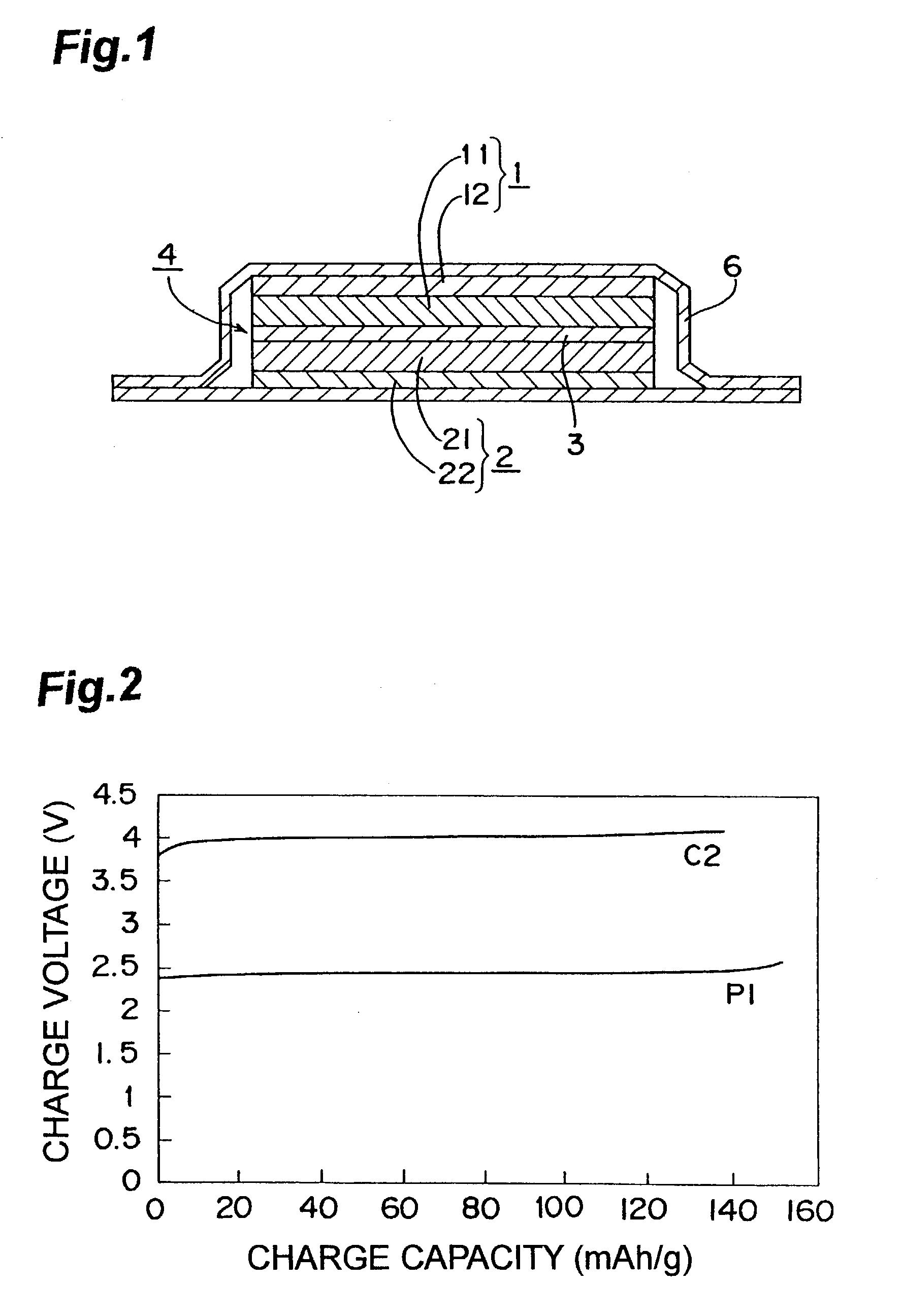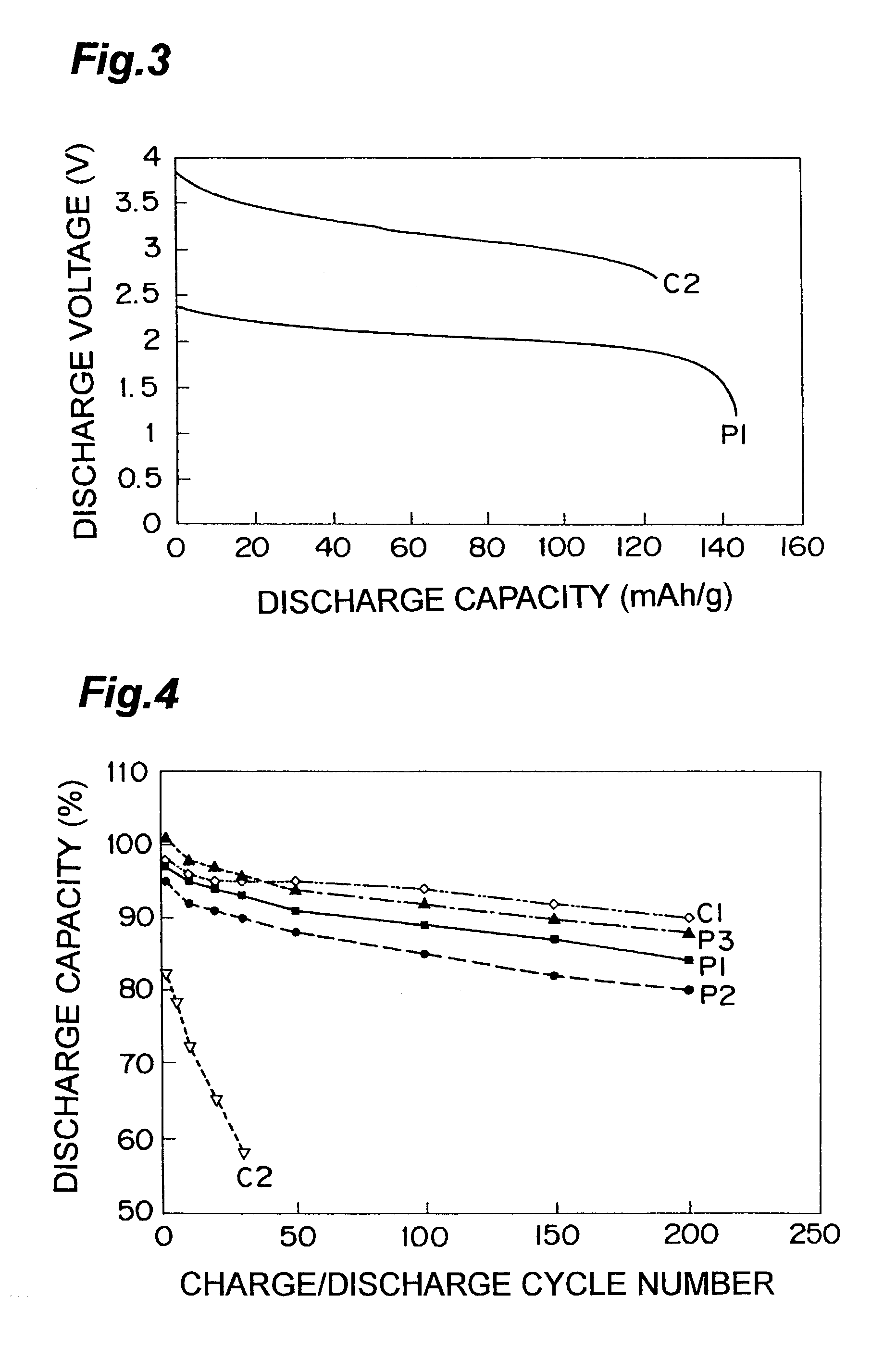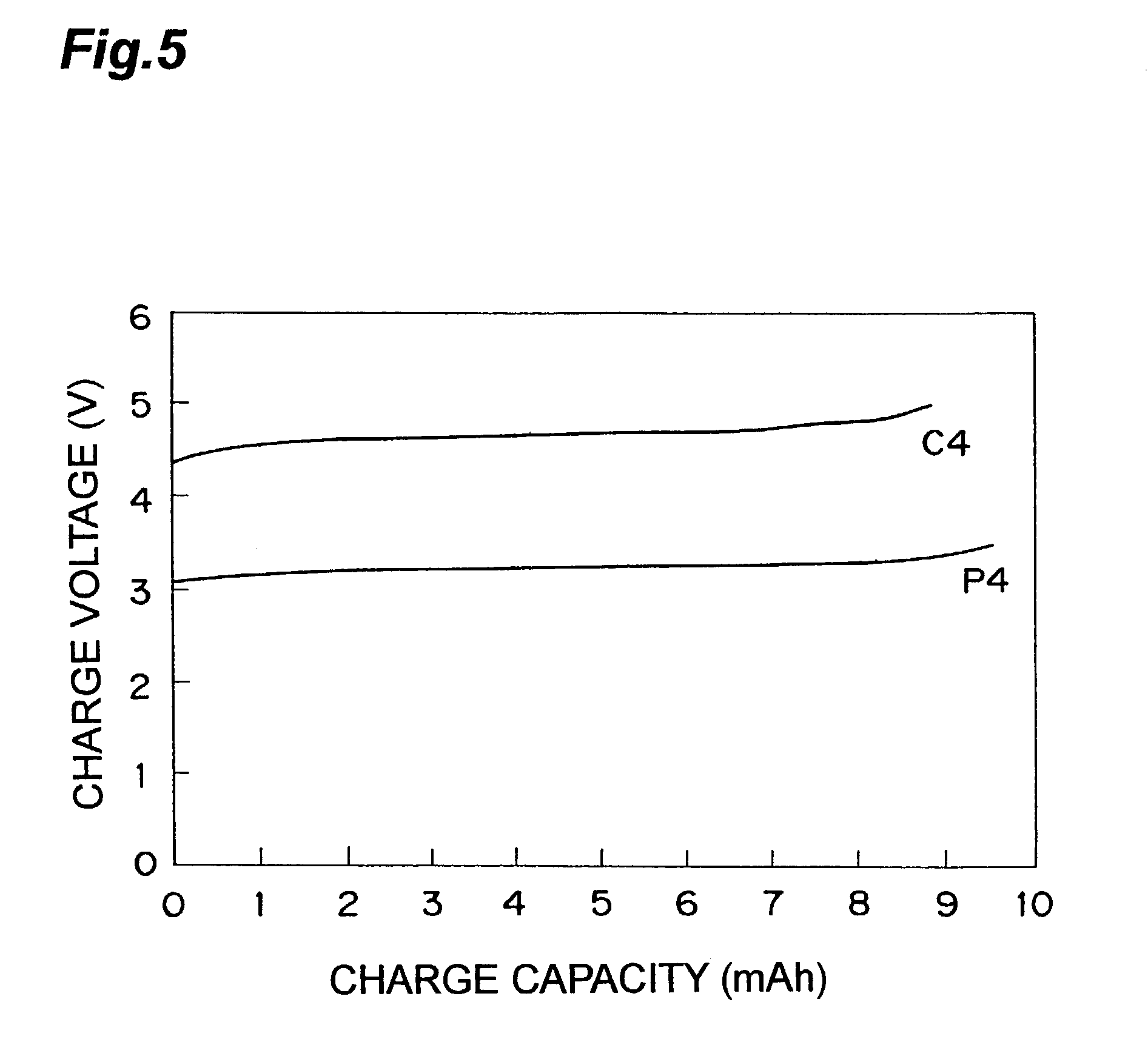Nonaqueous electrolyte lithium secondary cell
a secondary cell, non-aqueous electrolyte technology, applied in the direction of non-aqueous electrolyte cells, cell components, electrochemical generators, etc., can solve the problems of cell performance worsening, cycle characteristic and charging/discharging efficiency characteristic worsening, cell performance worsening, etc., to prolong service life, improve cell performance, and maintain a sufficient high level of cell performance and stability
- Summary
- Abstract
- Description
- Claims
- Application Information
AI Technical Summary
Benefits of technology
Problems solved by technology
Method used
Image
Examples
embodiment 1
[0060]FIG. 1 is the sectional view of the nonaqueous electrolyte lithium secondary cell according to the present invention.
[0061]This nonaqueous electrolyte lithium secondary cell is composed of an assembled element 4 comprising a positive electrode 1, a negative electrode 2 and a separator 3; a nonaqueous electrolyte; and a metal resin composite film 6. The positive electrode 1 is so formed that a cathode composite 11 is coated on one surface of a positive current collector 12. The negative electrode 2 is so formed that an anode composite 21 is coated on one surface of a negative current collector 22. The separator 3 is composed of a micro porous membrane made of polyethylene. The nonaqueous electrolyte is in liquid-state and contained in the cathode composite 11, the anode composite 21 and the separator 3. The metal resin composite film 6 covers the assembled element 4, and is thermally jointed at its four sides to seal the assembled element 4.
[0062]A method of manufacturing the n...
embodiment 2
[0072]1 mol of LiBF4 was dissolved in 1 L of room temperature molten salt (BPyBF4) comprising N-butylpiridinium ion (BPy+) and BF4−, and this material was used for the nonaqueous electrolyte. The other procedure was the same as that of the invention cell P1, so that a nonaqueous electrolyte lithium secondary cell was prepared. This cell is designated as an invention cell P2.
embodiment 3
[0073]Li4 / 3Ti4 / 3B1 / 3O4 was used for the negative active material, and the other procedure was the same as that of the invention cell P1. Thus, a nonaqueous electrolyte lithium secondary cell was prepared. This cell is designated as an invention cell P3.
PUM
| Property | Measurement | Unit |
|---|---|---|
| conductivity | aaaaa | aaaaa |
| temperature | aaaaa | aaaaa |
| temperature | aaaaa | aaaaa |
Abstract
Description
Claims
Application Information
 Login to View More
Login to View More - R&D
- Intellectual Property
- Life Sciences
- Materials
- Tech Scout
- Unparalleled Data Quality
- Higher Quality Content
- 60% Fewer Hallucinations
Browse by: Latest US Patents, China's latest patents, Technical Efficacy Thesaurus, Application Domain, Technology Topic, Popular Technical Reports.
© 2025 PatSnap. All rights reserved.Legal|Privacy policy|Modern Slavery Act Transparency Statement|Sitemap|About US| Contact US: help@patsnap.com



